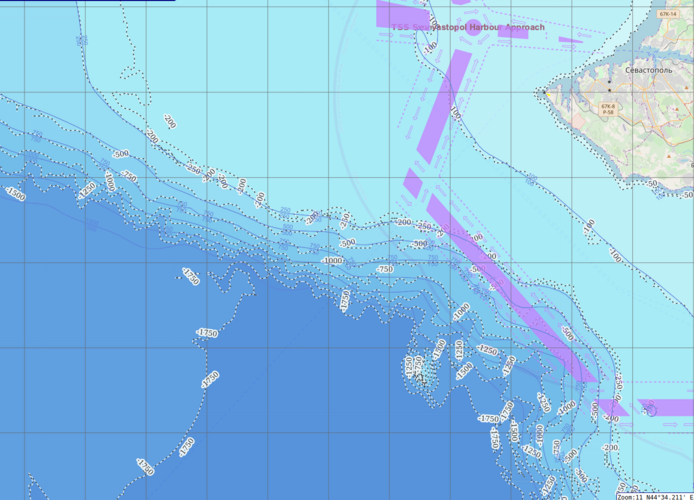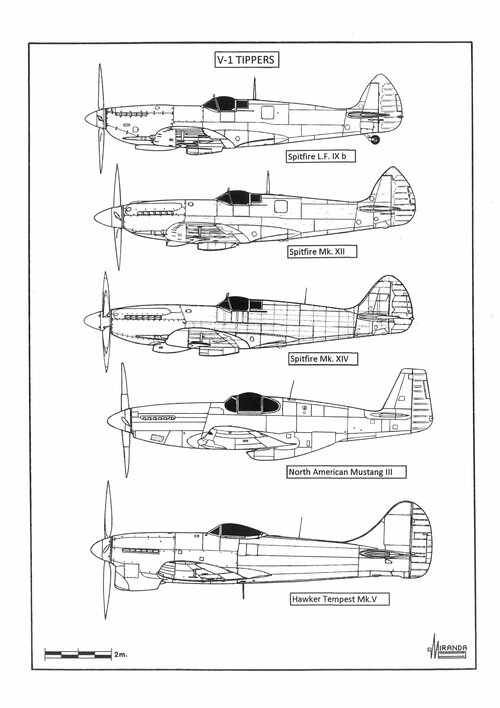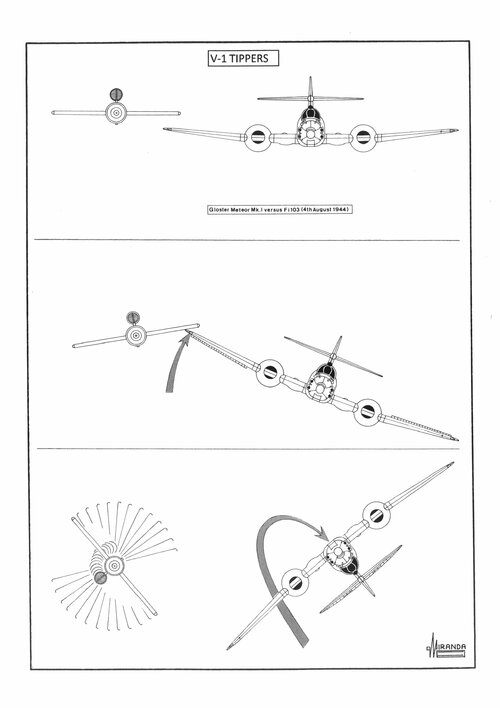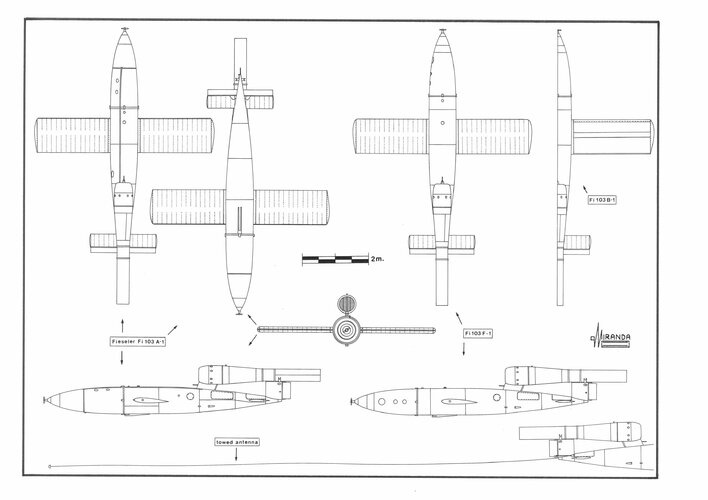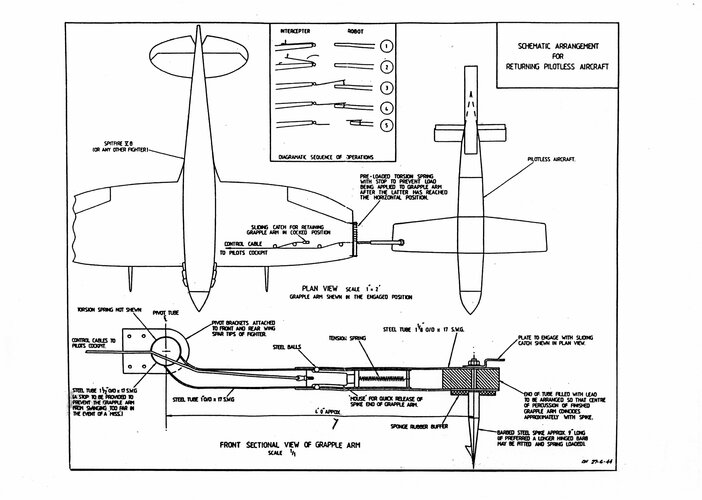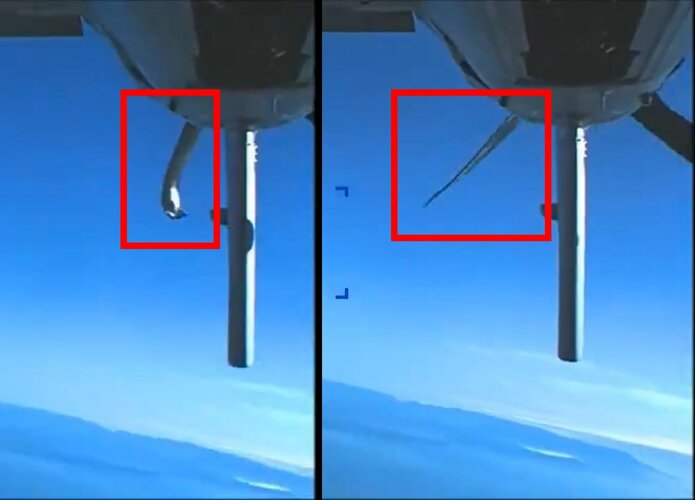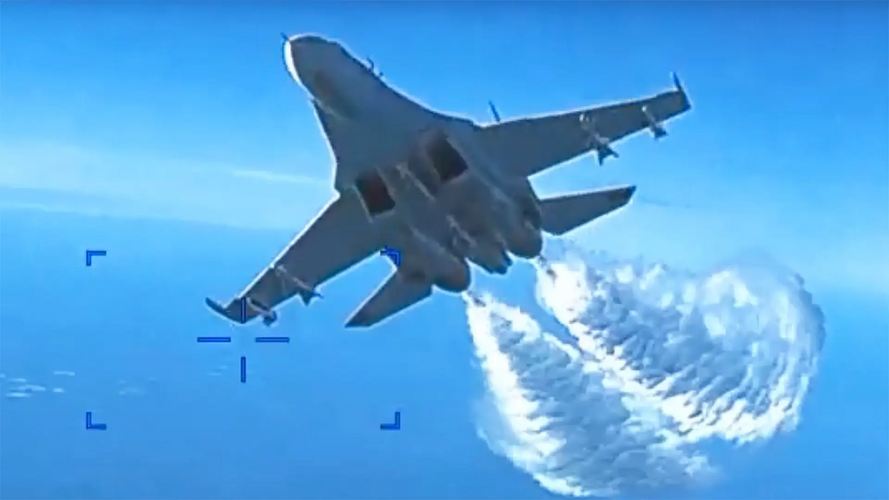During the weeks preceding the 'D-Day', launched a desperate offensive against the V-1 launch sites and storage buildings built between Cherbourg and Calais. Using all available aircraft, capable of carrying bombs or rockets, they were able to destroy a 25 per cent of the facilities, delaying the release of the first missiles until a week after the Normandy landings.
The British defences had been continually reinforced since 1940. During the weeks preceding the 'D-Day' they consisted of 100 radar stations, some 2,000 barrage balloons and 2,729 anti-aircraft guns shooting proximity-fuse shells. Many batteries located between Dover and Hastings were equipped with a predictor fire-control radar system.
To face the 'robot offensive' the defences of the 'Operation Diver' was formed by four lines: long range fighters, operated from the southeast of England to near the French coast; the anti-aircraft artillery located in the south coast of England; the area between the coast and London, covered by high performance interceptors and the urban areas protected by balloons barrages.
The aerodynamic drag of the V-1 airframe was higher than anticipated, due to low standards of manufacturing, decreasing from projected 900 km/h to the real 640 km/h. Fortunately for the Allies this made the new missile susceptible to be intercepted by conventional fighters.
In the outward perimeter operated the Mustangs Mk.III of Squadrons 129, 306 (Polish), 313 (Polish) and the Mosquitoes FB Mk VI of the 418th Canadian Squadron. By night, Mosquitoes NF. Mk VII of Squadrons 29 and 465 (Australian), the NF. Mk XII of the 488th Sqn (New Zealander), the NF. Mk XIII of Squadrons 96, 264 and 409 (Canadian), the NF. Mk XVII of the 125th Sqn, the NF. Mk XVIII of the Squadrons 25 and 68, the NF. Mk XIX of the 157th Sqn and the Northrop P-61 Black Widows of American Squadrons the 422nd and 425th took part in the operations.
The Spitfires Mk IX of Squadrons 1, 165, 274, 453 (Australian) and 610, Spitfires Mk XV of the 41st Sqn, Tempests Mk V of the Squadrons 3, 56, 80, 274, 486 (New Zealander) and 501 and Meteors Mk I jet fighters of the 616th Squadron operated in the inner area.
The V-1 had a reduced frontal area equivalent to half of the Bf 109, an engine with the diameter of a dish, a mechanic pilot fitted in a shoe box and a steel airframe. It was very difficult to shoot down. As they were camouflaged, it was very difficult to distinguish them from the landscape when over land. Over sea and at low altitude, the estimated height over the surface in diving attack left very little margin to the pilots. By night, the outburst of the pulsejet was visible from 24 km and gave false range measurements. Some Mosquito pilots, dazzled by the shine, shot from 100 m and one lucky P-61 survived the blast of a V-1 just 46 metres from its nose.
Flying at 725 km/h, a Tempest had just two seconds to dodge the debris produced by the explosion of the V-1 which had just shot from 275 m. Some pilots preferred to cross the centre of the explosion where there was less shrapnel, but the inflamed fuel affected the engine, the paint and the fabric covered control surfaces. To avoid this, a Mosquito FB VI of the 418 Squadron destroyed a V-1 by simply cutting the missile trajectory and putting it out of control with the trail turbulence. On the contrary, a Meteor of the 616th Squadron stroke the missile wing with the fighter wingtip, decontrolling the gyroscopes. This technique, called 'Tipping', required speed and piloting ability and was only used on 17 occasions.
For the Spitfires the game was even more dangerous, due to its lower structural resistance. They used to start the attack with a dive to gain speed, moving on to horizontal flight at 230 m behind the missile to be able to shoot it. The calculation of relative speeds was complicated, and some pilots died when firing from a too short distance.
It was necessary to modify the fighters to make them fast enough to intercept the V-1. Some Tempests and Spitfires Mk XIV were tuned to operate at 11 and 25 psi boost pressures; the Mustang III changed their exhaust by those of the Spitfire engine that generated less drag; the P-47 M Thunderbolts, with 2,800 hp war emergency power boosted engines, were modified halving its armament and fuel capacity and the armour plates were also stripped. To reduce the drag on some Spitfires, wingtips, rear view mirrors and armoured glass windscreens were replaced by those of the P.R. versions of curved type. The camouflage paint was also removed to gain some speed. During the 'Operation Diver', between June 1944 and March 1945, sixteen squads of interceptors used the new aviation fuel '150 grade' produced in the USA. Out of the 3,957 V-1 destroyed during the 'robot war', 1,785 were shot down by fighters.




